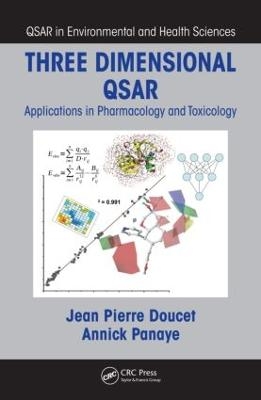
Three Dimensional QSAR
Applications in Pharmacology and Toxicology
Seiten
2010
Crc Press Inc (Verlag)
978-1-4200-9115-1 (ISBN)
Crc Press Inc (Verlag)
978-1-4200-9115-1 (ISBN)
The quantitative structure-activity relationships (QSAR) continue to evolve quickly with an explosion of various tools and techniques. This book addresses the scope and limitations of different modeling techniques using case studies from pharmacology, toxicology, and ecotoxicology to demonstrate the utility of each technique.
As a result of new statistical and mathematical approaches, improved visualization tools, and recognition by international regulatory groups, quantitative structure-activity relationships (QSARs) now play important roles in pharmacology for the design of new drugs as well as in toxicology and ecotoxicology for hazard identification and risk assessment. Providing up-to-date coverage of the field, Three Dimensional QSAR: Applications in Pharmacology and Toxicology presents the most recent QSAR methods and illustrates their scope, advantages, and limitations.
Part I The first part of the book addresses CoMFA and related methods, such as CoMSIA, FLUFF, SOMFA. It also describes shape-, surface-, and volume-based approaches, including MSA, excluded volume, LIV, HASL, receptor surface model, COMPASS, and CoMSA.
Part II Focusing on methods that use 3D information, the second part covers autocorrelation methods, such as GRIND; similarity-based methods, including similarity matrices and quantum similarity indices; and quantitative spectroscopic data–activity relationships. Some applications in data mining are also explored.
Part III The third part deals with post-3D models. The authors discuss the adaptation of the receptor and simultaneous presence of several conformers or solvation mechanisms.
Part IV The final part presents receptor-related approaches as well as docking and free energy calculations, which are treated at various levels. This part concerns the extensive sampling of phase space and approximate methods, such as linear interaction energy, Poisson–Boltzmann, and generalized Born models. A case study covering several parallel approaches is also developed.
An appendix offers the basic principles of modeling and statistical tools routinely required in QSAR methodologies, includi
As a result of new statistical and mathematical approaches, improved visualization tools, and recognition by international regulatory groups, quantitative structure-activity relationships (QSARs) now play important roles in pharmacology for the design of new drugs as well as in toxicology and ecotoxicology for hazard identification and risk assessment. Providing up-to-date coverage of the field, Three Dimensional QSAR: Applications in Pharmacology and Toxicology presents the most recent QSAR methods and illustrates their scope, advantages, and limitations.
Part I The first part of the book addresses CoMFA and related methods, such as CoMSIA, FLUFF, SOMFA. It also describes shape-, surface-, and volume-based approaches, including MSA, excluded volume, LIV, HASL, receptor surface model, COMPASS, and CoMSA.
Part II Focusing on methods that use 3D information, the second part covers autocorrelation methods, such as GRIND; similarity-based methods, including similarity matrices and quantum similarity indices; and quantitative spectroscopic data–activity relationships. Some applications in data mining are also explored.
Part III The third part deals with post-3D models. The authors discuss the adaptation of the receptor and simultaneous presence of several conformers or solvation mechanisms.
Part IV The final part presents receptor-related approaches as well as docking and free energy calculations, which are treated at various levels. This part concerns the extensive sampling of phase space and approximate methods, such as linear interaction energy, Poisson–Boltzmann, and generalized Born models. A case study covering several parallel approaches is also developed.
An appendix offers the basic principles of modeling and statistical tools routinely required in QSAR methodologies, includi
Jean Pierre Doucet and Annick Panaye are both professors at Université Denis-Diderot, Paris, France. They have chaired several conferences and published numerous papers.
Actual 3D Models. Around the 3D Approaches. Beyond 3D. Receptor-Related Models. Concluding Remarks. Appendices. References. Index.
| Erscheint lt. Verlag | 20.12.2010 |
|---|---|
| Reihe/Serie | QSAR in Environmental and Health Sciences |
| Zusatzinfo | 8 Tables, black and white; 321 Illustrations, black and white |
| Verlagsort | Bosa Roca |
| Sprache | englisch |
| Maße | 156 x 234 mm |
| Gewicht | 1230 g |
| Themenwelt | Medizin / Pharmazie |
| Naturwissenschaften ► Biologie ► Biochemie | |
| Naturwissenschaften ► Chemie ► Physikalische Chemie | |
| Technik | |
| ISBN-10 | 1-4200-9115-8 / 1420091158 |
| ISBN-13 | 978-1-4200-9115-1 / 9781420091151 |
| Zustand | Neuware |
| Informationen gemäß Produktsicherheitsverordnung (GPSR) | |
| Haben Sie eine Frage zum Produkt? |
Mehr entdecken
aus dem Bereich
aus dem Bereich
Die Biochemie und industrielle Nutzung von Naturstoffen
Buch | Softcover (2024)
Springer Spektrum (Verlag)
49,99 €


